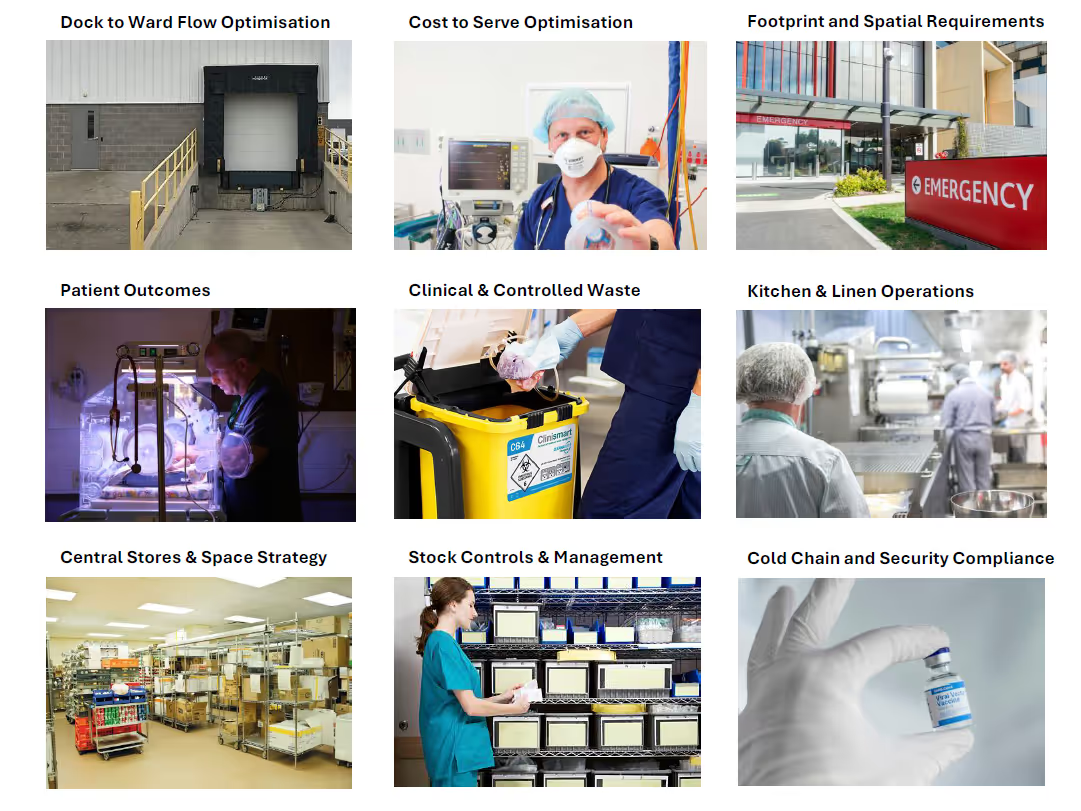As the world adjusts to life after the COVID-19 pandemic, hospitals have been under increased pressure to ensure the efficient functioning of their supply chain, back of house logistics, and central store operations. Hospitals need to maintain an adequate inventory of essential medical supplies, consumables and equipment, while also ensuring their timely delivery to different departments and facilities.
Here are ten ways that hospitals can improve their supply chain, back of house logistics, and central store operations.
Centralise Procurement Processes
Centralising procurement processes helps hospitals to consolidate their purchasing power, streamline the purchasing process, and negotiate better prices with suppliers. This can result in cost savings, which can be used to fund other critical healthcare initiatives.
Invest in a Robust Inventory Management System
A robust inventory management system is essential for hospitals to keep track of their stock levels and replenish supplies on time. An inventory management system can help hospitals avoid stock-outs, reduce waste, and minimise the risk of expired products.
Leverage Automation Technologies
Automation technologies, such as robotics and artificial intelligence, can help hospitals to streamline their supply chain and back of house logistics. For example, robotic process automation (RPA) can automate repetitive tasks, while AI can optimise inventory levels and predict demand.
Implement Lean Practices
Lean practices are based on the principles of eliminating waste and improving efficiency. By implementing lean practices, hospitals can optimise their supply chain, reduce costs, and improve the quality of care they provide.
Focus on Supplier Relationship Management
A good supplier relationship management program can help hospitals to develop strong partnerships with their suppliers. This can lead to better pricing, improved delivery times, and better overall service quality.
Develop a Contingency Plan
Hospitals must develop a contingency plan to manage unforeseen events such as natural disasters, pandemics, or other emergencies. A contingency plan can help hospitals to ensure continuity of supplies and minimise disruption to patient care.
Monitor Key Performance Indicators (KPIs)
KPIs are essential metrics that help hospitals to measure their performance and identify areas for improvement. By monitoring KPIs, hospitals can track their progress, identify bottlenecks, and make data-driven decisions to improve their supply chain and logistics.
Implement Vendor-Managed Inventory (VMI)
VMI is a process where the supplier takes responsibility for managing the inventory at the hospital. This can help hospitals to reduce the burden of managing inventory, minimise stock-outs, and ensure timely replenishment.
Optimise Transport and Delivery
Optimising transport and delivery can help hospitals to reduce costs, improve efficiency, and ensure timely delivery of supplies. This can be achieved by using the right mode of transportation, optimising delivery routes, and using technology to track shipments.
Develop a Strong Culture of Continuous Improvement
Finally, hospitals must develop a strong culture of continuous improvement to ensure that they remain agile and responsive to changes in their environment. By continuously improving their supply chain and logistics, hospitals can provide better care to their patients while minimising costs.
Contact us today, trace. your supply chain consulting partner.






